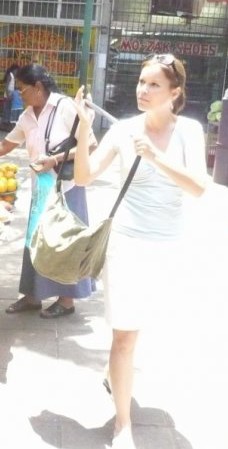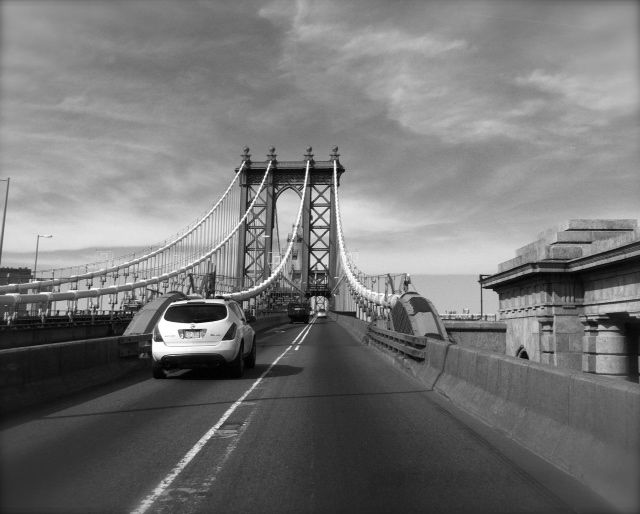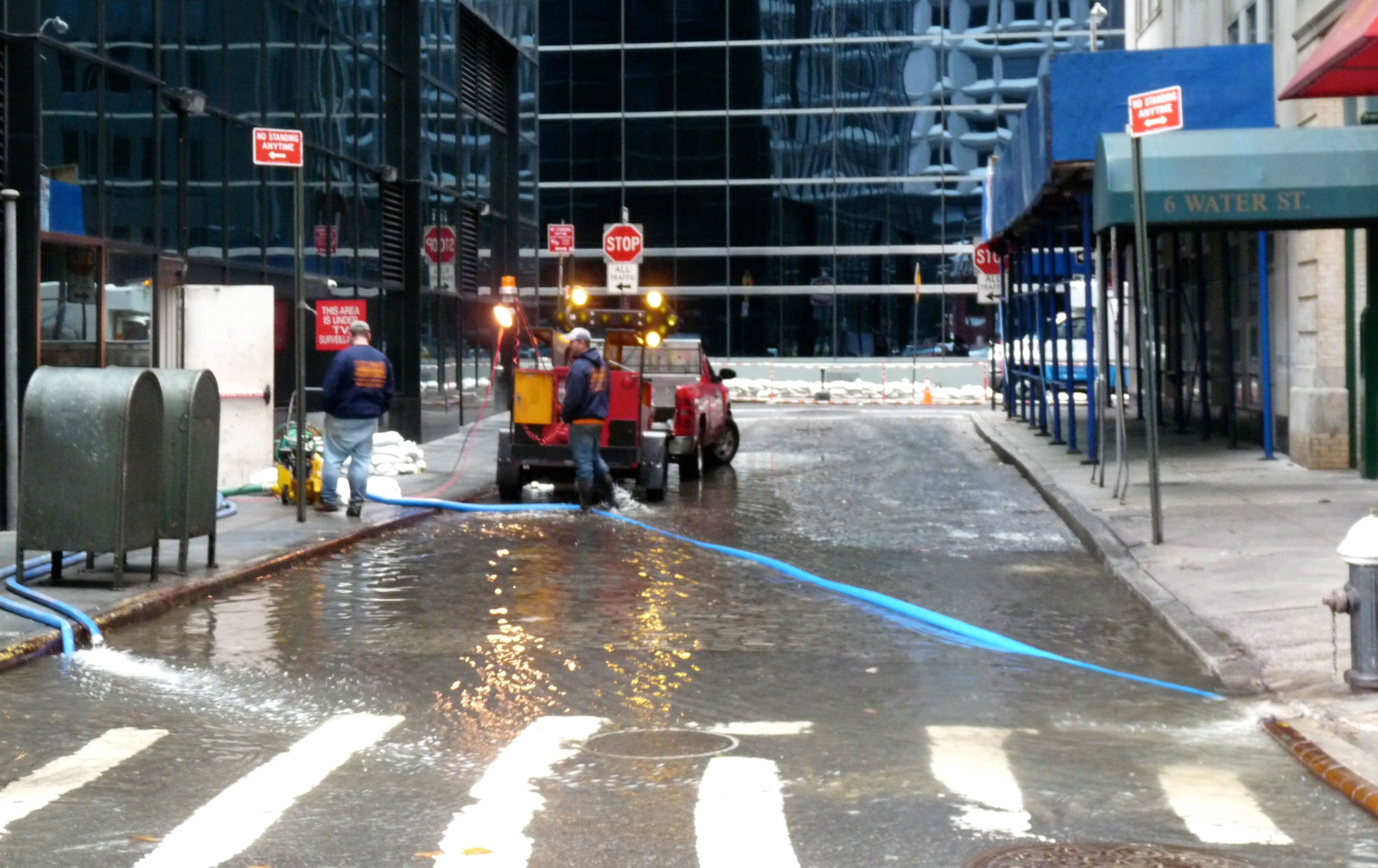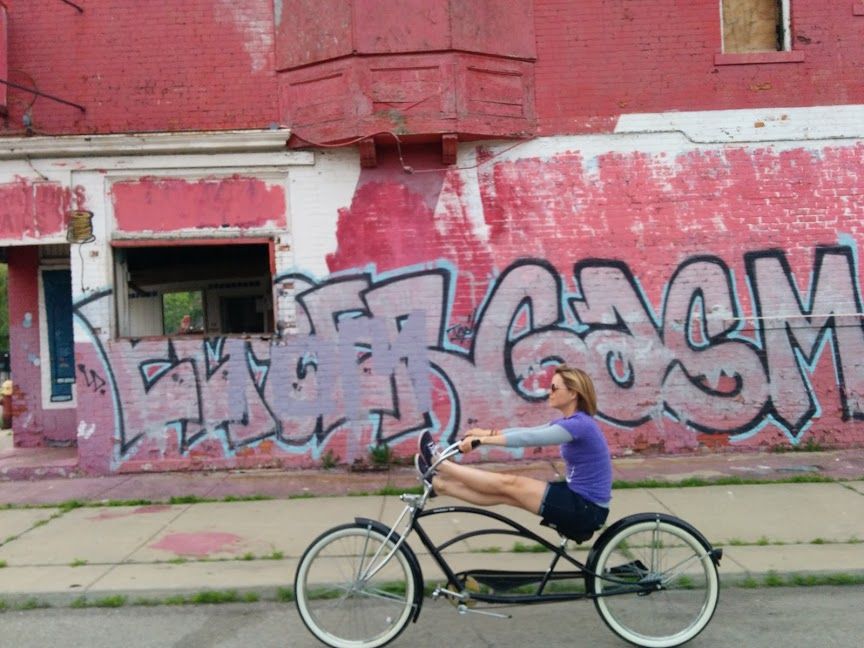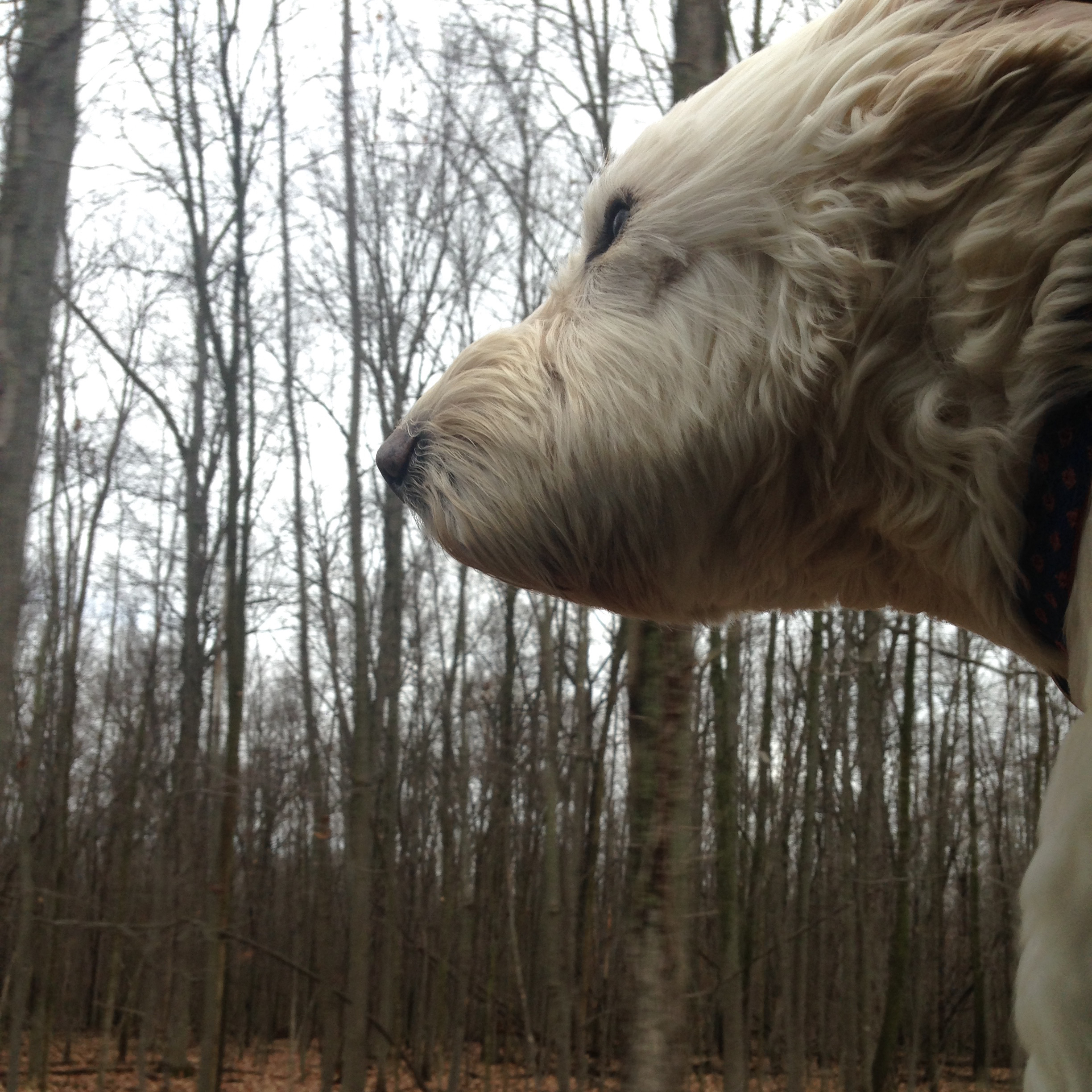
Why does every dog riding in a car long to stick its head out the window? Because it knows that the secret to happiness is wind on skin and air in hair. This is our clue to a fundamental truth for dogs and for people (and probably other mammals)– there is a critical velocity at which one can travel that will unfailingly make them happy. Continue reading “Air on Face at Pace”
Pants (The Second Installment)
In a city as flat as New York, bridges represent pretty much the only hills that bikers face. Among bridges, the Williamsburg boasts the most challenging uphill climb for bikers (according to me).
The Williamsburg Bridge is over mile long. The road bearing cars and trucks is relatively level, the subway line is offset slightly above the road, and the pedestrian pathway rises above them all. Foot and bike traffic follows a steep route consisting of three segments, with a strong slant on either end and a moderately lower grade in the middle.
Scrambling up that incline one morning on my way to work, I was surprised to see another bike gaining on me. I’m a competitive person and I enjoy the sport of passing other bikers– especially men– so I was surprised to see a woman closing the gap between us.
I picked up my pace to try to shake her but she caught up in spite of my efforts. She pulled abreast, and faced me as we continued pedaling aggressively, then, with bated breath she said “I just had to tell you….GASP…..your pants….GASP….are totally see-through!”
And with that, she slowed down and faded into the distance.
Trying to Let it Out
When I got married at the very young age of 21, I meant every word in my vows. When we celebrated our 5th anniversary, I thought we might someday celebrate our 50th. Divorce was not a milestone either of us ever expected to reach. So when I moved out of the apartment my husband and I shared, it was confusing and traumatic and deeply painful for both of us. Only weeks later, I was in a serious car accident. Heading to a New Year’s Eve party along the oceanfront Pacific Coast Highway in LA, the car I was in slammed into the side of another car making a poorly-timed left turn across our lane. We were incredibly lucky: everyone was wearing their seat-belt, no one was intoxicated, no one was driving above the speed limit, and no one was seriously injured. Except me. Continue reading “Trying to Let it Out”
Pants (The First Installment)
For one week in August I took an energy efficiency class up in the Bronx. I headed “up North,” riding my bike the 10 or so miles from midtown Manhattan through Times Square, alongside Central Park and on into that Other Borough. On my back I carried a pack with a notepad and pen, a sack luck, a water bottle and a change of clothes.
I’ve often thought that if I could play God or Mayor for a day, my first task would be to demolish the highways. As in the city of Detroit, neighborhoods in the Bronx have been bi-sected pureed and splayed out by highways. Back in the 70’s people paved over neighborhoods and truncated others with the myopic hubris that justified those roads as quite literally a means to an end (the end being Manhattan in the case of the Bronx, the end being The Suburbs in the case of Detroit).
With highways come overpasses, and that commute was the first time I had occasion to cross over a pedestrian overpass in New York. In the sweltering heat of that baking city in late summer, I carefully navigated around what appeared to be human feces* and entered into that beleaguered borough. Continue reading “Pants (The First Installment)”
Bike for Your Rights
-or-
“Don’t Let Special Interest Groups Tell You Not To Let Bureaucrats Tell You What Size Beverage to Buy”
Times were tough in New York following Mayor Michael Bloomberg’s highly-contested anti-soda campaign, which waged war on the sugared-beverage rights of peace-loving not-quite caffeinated-enough New Yorkers. For the uninitiated, I’ll inform you that the mayor’s idea was to ban soda cups over a certain size to make a small splash in the fight against obesity.
Coming Home
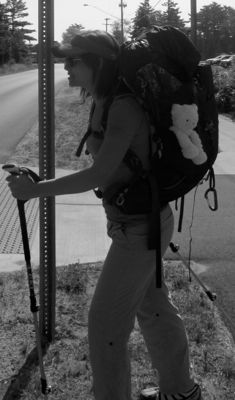
My submission to The Moth Ann Arbor Story SLAM topic: “Home” Video available here.
I grew up in the small town of Chelsea, Michigan. And when I went to college I attended The University of Michigan, only 15 miles away. What this means is that, for the first couple decades of my life, my world was rather narrow, geographically speaking.
But while I was I college, I met my future husband and he changed all that. Together we have traveled to 5 continents, and over a dozen countries, we have lived in Australia, South Africa, and France. My whole world expanded. Continue reading “Coming Home”
Trapped
When I first moved to New York City, I lived smack-dab in the center of midtown, under the shadow of the Empire State Building. I spent my days searching for a job and exploring my new city. One warm fall day, I dressed in a cute flowy skirt and went for a walk down Broadway. It felt very iconic, strolling down the avenue, passing shops and restaurants, seeing fashionable business-men and women. I boldly made eye contact with good-looking men as they walked by. Here in New York City of all places, these mysterious men regarded me with interest. I felt powerful, beautiful, and strong. How wonderful to be considered attractive by a stranger! Continue reading “Trapped”
Defiance
When you move to a large city like New York, you join millions of others who make it their home. Whether you know it or not, you are affirming their choice to live there and they are validating you right back. Your collective presence is evidence that you’ve selected a desirable location, and that means something. Continue reading “Defiance”
Re-Sus-citate!
Like a somber “talking-to” from a family doctor, Superstorm Sandy forced New Yorkers to face an uncomfortable reality: the irresponsible lifestyle we have lived for so long has put us at risk, and we must take significant measures to preserve our health going forward. It will take a dual approach of both sustainability and resilience to prevent and respond to the threats of climate change. These issues are as important as they are complex, so let’s borrow some familiar concepts from medicine to understand what they mean for the health of our city.
In healthcare, we recognize a need for both preventative care — avoiding problems before they arise — and curative care — anticipating problems that will come about despite our best efforts to prevent them. The health of the urban environment is no different. When it comes to climate change, sustainability means “reducing it” whereas resilience means “reducing its impacts.” In one case we are trying to prevent something from happening, in the other we are trying to mitigate the negative impact when it does. While the two issues are complementary, their differences are important. “Sustainability” and “resilience” are not synonyms, but rather complementary forces, a yin and yang, which must be tackled in equal measure.
“Resilience” is one of those terms that sprung from obscurity after the storm, suddenly popping up in mayoral speeches, campaign platforms and government-commissioned reports. As with many conceptually dense terms that abruptly enter the social consciousness, it is widely misunderstood. Resilience is often mistaken for another term that we’ve heard a lot about lately: sustainability. While many people fall into the trap of mistaking one for the other, it is actually easy to distinguish between them.
In a nutshell, resilience includes “adaptations to our environment to increase the ability to withstand and recover quickly from weather-related events.”[1] Here in New York, it speaks to the need to protect the buildings, transportation, infrastructure and people from gradually rising sea levels and storm-induced surges. Meanwhile, sustainability is the never-ending pursuit of reduced environmental impact to limit climate change. It encompasses clean energy, waste and water management, and, in a city where 75% of greenhouse gas emissions come from buildings[2], energy efficiency.
Suppose you are the mayor facing a completely different social problem- an imminent flu epidemic, for example. The “sustainability” measures needed would include vaccination efforts and hygiene campaigns to limit the scale of the outbreak. The “resilience” measures you enact would include increasing access to medicines and enabling hospitals and clinics to handle the influx of patients to treat those who fall ill. Government leaders must understand the importance of both approaches or risk an anemic response.
Complicating matters is the fact that we are one of many players in a complex network in which the forces of climate change have already been set in motion. Global climate systems will wreak havoc on New York City despite our best efforts to prevent them. But we still must try. There is a social contract in effect that demands everyone’s participation and protection. When parents vaccinate their children, they do so first and foremost for their own child’s sake. Yet, in aggregate, their efforts lead to widespread impacts.
Through “herd immunity”, a society can effectively eliminate a threat that might have otherwise been a public health disaster. On the other hand, a high proportion of unvaccinated people can lead to broad negative impacts, where those who are too young, too poor, or too ill to be protected are put at risk. When it comes to severe weather, New York City is certainly among those most vulnerable, with its vast resources clustered so close to sea level. If we all participate, there can be real reduction in greenhouse gas levels, yet if enough cities or nations fail to participate, they will diminish the efforts of the others.
Here’s the good news: New York is on track to be a national and international leader on environmental issues. While we cannot hope to influence global climate trends on our own, we can be a positive force for increased sustainability that can make a tangible difference. In 2007, New York City adopted PlaNYC, a set of interrelated policies with a shared goal of reducing greenhouse gas emissions by 30% by 2013[3]. One component of PlaNYC is a mandate that large buildings complete an annual energy benchmarking report (Local Law 84 of 2009). Similar legislation has now been passed in major cities around the county: Washington DC, San Francisco, Austin, Boston, Chicago and Seattle[4] all have energy benchmarking laws aimed at improving building efficiency. Together, these cities make the whole herd safer. By taking the first step, New York has blazed a trail for sustainability with a widespread positive influence.
While the analogy is useful, climate change is not just a metaphorical health threat: extreme weather and other consequences of climate change can have life-threatening impacts. The challenges are daunting and the issues complex, but with greater understanding and sustained commitment, we can have a strong positive impact.
With a new mayor coming into office on January 1, 2014 New York City has the opportunity to build on the significant environmental efforts of Mayor Bloomberg. As of September 24, 2013 resilience was added to the scope of the Office of Long-Term Planning and Sustainability.[5]Meanwhile, millions of dollars in federal aid remain to be spent on post-Sandy recovery[6] and the City Council currently faces proposed legislation that covers broad environmental issues including plastic bag management, building heat retention, and flood management[7]. Bill de Blasio has the power to sign or veto these bills, and, if they become law, his administration will have the responsibility to implement similarly progressive legislation.
Change happens whether we like it or not, but we are not helpless spectators. Sustainability efforts to lower greenhouse gas emissions can reduce the frequency and severity of extreme weather events. Resilience measures to buttress our defenses can diminish the consequences of what we fail to avoid. There cannot be one without the other. The health of this City depends on our ability to apply this lesson. Re-Sus-Citate New York!
Light on Blight
I grew up in a sweet, serene, safe community: a bastion of purity in small-town Michigan. We had no world-class issues. The police blotter in the local paper was comedically innocent: “raccoon topples garbage can,” “local man double-parks van.” But not too far away, trouble loomed large. Detroit, with its towering tombs was a shame to our state, replete with evidence of poverty, racial conflict, failure. We could not be proud of it so we pretended it did not exist. We could not fix it and so we ignored it.
But it turns out, problems do not solve themselves. Untended, a cancer grows, and a city cannot be surgically removed. Most with the option to do so have retreated and put up a nice tall fence.They take comfort in a combined dosage of nostalgia and finger-pointing- “there’s nothing we could do.” Yet there is a growing coalition of loyalists and adventurers with the temerity to return to that place we have long since disowned. Our denial can only continue for so long.
Not unlike my home state, I have a parts of myself I would rather not face. A rough, unpolished side that, for years, I tried to hide, wish away, bury. The greater heights I reached in my career, in my personal life, the harder it became to face the grit below. But that is part of me too goddammit, and it remains.
With these thoughts in mind, I have taken my imperfect self to this imperfect place, the city of Detroit. I will face and embrace those unpolished edges which I tried so valiantly, so vainly to avoid. New York is a skyscraper, unwilling to face it’s flaws because they seem so far away from such haughty heights. New York is denial. Detroit is a smokestack, honest and brash in the face of faults so evident no one can pretend they don’t exist. Detroit is acceptance.
Detroit and I, we are flawed but full of potential. I cannot take back those years of neglect, but I can try now to make amends. I will shed light on those dark corners, long ago left behind, discovering the truth they’ve waited so long to share.


